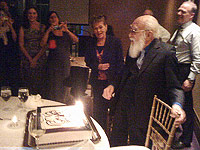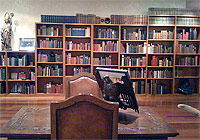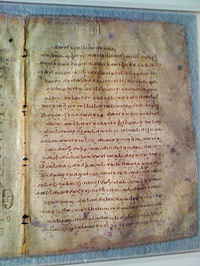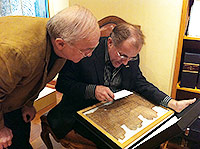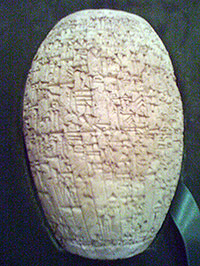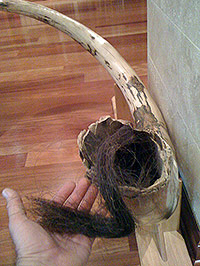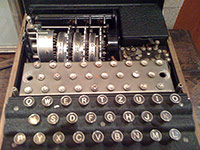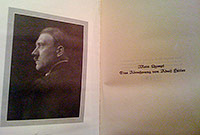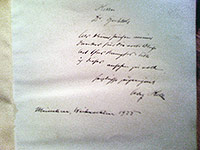Touching History
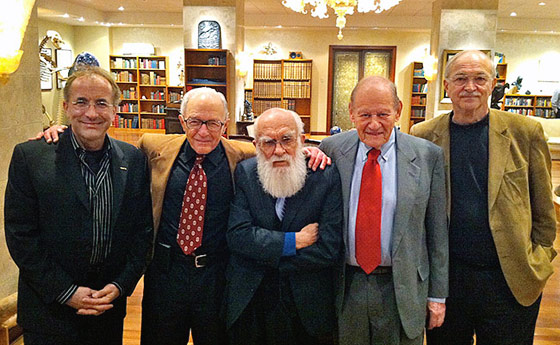
Skeptical Luminaries right to left: paranormal investigator Joe Nickell, Center for Inquiry founder Paul Kurtz, the Amazing One himself, and psychologist and magician Ray Hyman
On Sunday, October 3, a group of skeptics gathered in Falls Church, Virginia to celebrate James Randi’s 82nd birthday. What an amazing meeting it was … er, an astonishing evening I mean, as Randi prefers to retain the “amazing” adjective for his moniker, James “The Amazing” Randi. Take a look at just a few of the giants present in the above photo — the legends of skepticism (from right to left: paranormal investigator Joe Nickell, Center for Inquiry founder Paul Kurtz, the Amazing One himself, and psychologist and magician Ray Hyman).
Also in attendance were Richard Dawkins, the magician Jamy Ian Swiss, the President of the James Randi Educational Foundation (JREF) D. J. Grothe, and many other skeptical luminaries from around the world, many of whom sang Randi’s praises in the tribute portion of the evening. Randi was presented with a beautiful birthday cake with his inimitable likeness on the icing, and something well short of 82 candles on top to blow out, which he managed successfully.
After dinner we all adjourned to the private library of a good friend of Randi and benefactor of JREF, who kindly allowed us to peruse his collection of some of the rarest books in the history of science, along with other spectacular items of considerable interest. It is, in short, the finest collection I have ever seen anywhere in the world. Any single volume on any of the shelves would be an item worthy of possession as one’s most cherished belonging, and here there were hundreds of such treasures.
How’s this for starters?: The Archimedes Palimpsest, purchased at auction for $2.2 million. Check out the two sets of lines on this page: one set of bold lines in Latin that was a medieval prayer book, and the other lighter lines in Greek that was nothing less than one of the most important treatises ever published by the ancient Greek mathematician Archimedes. I highly recommend the book, The Archimedes Codex, by Reviel Netz and William Noel, that uncovers the mystery story of how this book came to auction, and the scientific detective story of how Archimedes ancient words were coaxed back to life. (Quality paper for publishing was so rare in the Middle Ages that older books were reused by scraping off the text and reprinting over it.)
If that isn’t awe inspiring enough, check out the photo of a page from an ancient Egyptian Book of the Dead that Joe Nickell and I are examining. Because papyrus paper is so delicate this one is under glass (so we couldn’t “touch history” directly in this case), but Joe and I were trying to find Randi’s name in there somewhere…
Talk about touching some old stuff, look at this many millennia-old Babylonian cylinder with cuneiform writing on it, apparently an ancient calculator of sorts (if memory serves … it was a heady evening trying to take in all these treasures).
Going back tens of thousands of years, look at the magnificent Wholly Mammoth tusk, and guess what that is in my hand: yes, that’s Wholly Mammoth hair. Is there a lab somewhere in the world who could take the DNA from that hair and clone a mammoth back to life? Forget Jurassic Park; I’d settle for Paleolithic Land.
Given my interest in World War II and all things Nazi, which I had to learn in researching my book Denying History (about the Holocaust deniers), this item made the hair on the back of my neck stand up: it’s a first edition of Mein Kampf. This one in particular was signed by Adolf Hitler to “Dr. Goebbels”, 1925. Next to it is another first edition addressed in Hitler’s hand to Hermann Goering.
As well, the library contains two Nazi enigma code machines, designed and built for encryption and decryption of messages and was used during the Second World War. The cracking of the enigma code encryption algorithms by the British led project ULTRA is said to have shortened the war by at least two years, if not being the single most important step toward victory.
There is something about touching history in this way that almost beggars description. It’s visceral. Running my fingers over the cuneiform clay cuts in the cylinder while imagining some ancient Babylonian accountant or scribe holding it in one hand while pressing into the wet clay with a small writing stick in the other draws one back in time. Rubbing the tips of my fingers over the parchment paper of medieval manuscripts brings to my inner ear a Gregorian chant wafting through the cold, dank halls of a European monastery with monks keeping alive ancient wisdom through their endless hours of copying the masters.
Visiting this library, in fact, is like a time machine, transporting you back anywhere into the past you like just by touching the spine of a book and pulling it off the shelf. I know, this all sounds so … well … New Ageish. I am a materialist, a monist — someone who does not believe that there is something immaterial like a soul or spirit or essence of a thing that carries on beyond the physical material of its original pattern. But to hold an item of such antiquity and such rarity and originality overwhelms the senses and enthuses the emotions beyond what meager words such as these can convey.
I touched the past and it lived again.


